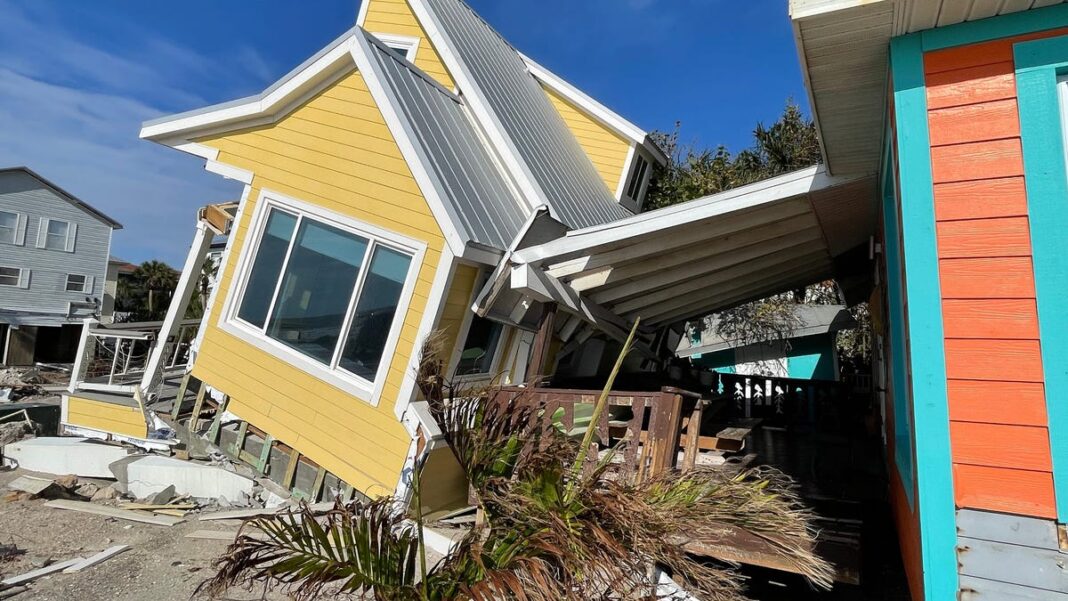Millions of Climate Refugees Already in the U.S. Could Be Joined by More Due to Helene and Milton
Pictures emerging from Florida, which has recently experienced two devastating storms, are sparking discussions among people nationwide about the future of living in such areas.
“Is Florida going to become uninhabitable in the coming years?” wondered one user on Reddit. On October 7, writer Dave Levitan shared an article titled “At Some Point You Don’t Go Back.”
For those questioning “why do people still reside there?”, a report from First Street, a data analytics company, sheds some light. Many Americans are indeed aware of the climate threats present in their regions and have been adapting by moving for years. However, most of these relocations have been local, such as moving to higher ground within the same municipality, where better infrastructures help mitigate flooding risks.
Yet as dangers escalate, the report suggests that many areas in Florida are now at a critical threshold. This “tipping point” signifies that moving a few streets uphill is no longer sufficient, prompting a significant portion of the population to permanently depart, potentially causing a decrease in local residents.
“I believe we are nearing tipping points in certain areas that will drive larger migration patterns,” stated Jeremy Porter, who leads climate research at First Street, which published its findings last winter.
“In Florida, the increase in the duration homes are listed on the market and a drop in sales prices suggests a decline in demand and an outflow of residents,” Porter mentioned in a recent oemail exchange with YSL News.
The real estate challenges in Florida are well-known. “Of the twelve markets where property prices have decreased in the past year, seven are located in Florida,” reported ICE, a real estate data firm, in its October Mortgage Monitor. Difficulties in obtaining affordable property insurance, with some areas like Jacksonville and Cape Coral seeing nearly 80% premium increases since 2019, contribute to these market difficulties.
According to recent data from Redfin, contract signings in Florida have also decreased. Although Hurricane Helene may have impacted sales in the short term, year-over-year sales in Fort Lauderdale fell by 13% and by 15% in Miami, both areas on the eastern coast that have not been directly hit by storms.
However, data from First Street indicates that Florida is not the sole destination for climate migrants. Across the U.S., over 800,000 census blocks—representing 7.4% of all blocks—have already crossed local tipping points and are experiencing population declines. These areas, termed “Climate Abandonment Areas,” saw a net loss of more than 3.2 million individuals from 2000 to 2020 due to flooding, the research reveals.
Many of these declining areas are recognizable: certain regions in Staten Island, New York face frequent “sunny day flooding,” while Bexar County, Texas, which features San Antonio, is also now identified as a significant flood-risk area, explains Porter.
“In Bexar County, TX, 17.1% of census blocks are losing population and have substantial flood risks above the tipping point, marking them as Climate Abandonment Areas, despite the overall county growth from 2000 to 2020,” notes First Street’s report.
According to First Street’s data, the impact of climate risk is already notable on local economies, even if migration isn’t widespread yet. Their models suggest that regions, like the Houston metro area, that have expanded despite high exposure to climate risks, would have attracted an even larger population if not for these dangers.
Interestingly, frequent, low-level flooding may pose a greater long-term risk than the more sensationalized “thousand-year storms.” Porter notes this, stating, “If you’re trapped at home twice a month every month, it gradually deteriorates the area’s infrastructure, leading people to shun the region due to its poor reputation as a flood-prone area.”
First Street estimates that the 3.2 million Americans who have finally left their homes due to climate-related concerns represent just the tip of the iceberg, with millions more likely to relocate in the coming decades.
Porter claimed that many Americans will soon start considering climate risk as a factor when looking for houses, much like they currently do for school quality and neighborhood walkability. “We are going to see a shift towards recognizing climate risk in how people assess and choose neighborhoods,” he said.

